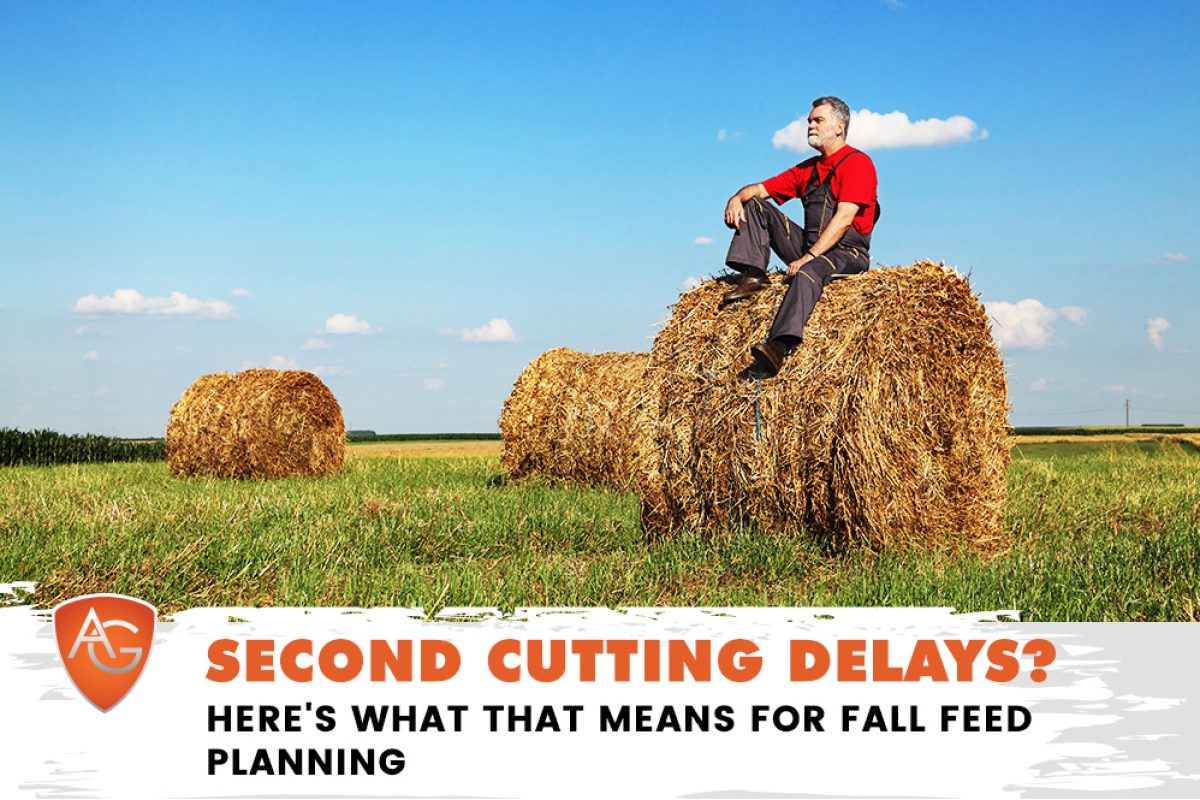Overview: Second cutting delays can affect hay quality, supply, and price. Learn what that means for your fall feed planning and how All Around Ag can help ranchers in Laramie County, WY. Read on!
Every rancher knows the rhythm of hay season, and when that rhythm is thrown off, it can ripple through the whole year. Second cutting is a cornerstone for many operations in Laramie County, and when it’s delayed, the impact goes straight into your fall feed plans.
Delays aren’t just an inconvenience — they can shape nutrition, supply, and pricing for the months ahead. Here’s what you need to keep in mind if second cutting is behind schedule this year.
Quality Shifts with Time
The later the cutting, the more mature the plant. That means lower protein, more fiber, and less digestibility for your cattle or horses. If you were counting on that second cutting to provide high-quality forage, you may need to balance rations with protein-rich options like straight alfalfa or orchard/alfalfa mix to keep livestock performance steady.
Supply Gets Tight
Second cutting often makes up a big part of local hay inventories. When it’s delayed, yields can drop, putting pressure on supply. That can mean tighter availability in the fall and higher competition for good-quality bales. Planning ahead now and lining up your fall hay supply can save you a lot of stress when everyone’s scrambling later.
Pricing Pressures
Delayed cuttings don’t just affect availability; they affect price. Lower yields and higher demand can push prices upward, especially on premium hay like North Park Timothy Grass or Wyoming Timothy/Garrison. The best way to protect your operation is by securing what you can early. Waiting too long could mean paying more or settling for hay that doesn’t meet your herd’s needs.
Adjusting Your Feed Plan
When the hay market shifts, your feed plan has to adjust with it. If the second cutting is delayed:
Blend hay types: Stretch your supply with cow hay or corn stalk rounds for brood cows, while reserving premium grass hay for horses or younger calves.
Use minerals wisely: Late-cut hay often lacks the mineral profile you need. Strengthen supplementation to fill those gaps.
Consider storage: If you buy early, make sure you’ve got the barn or tarp space to protect your investment.
Look Ahead to Winter
Fall feed planning doesn’t stop at fall — it’s about setting up for winter, too. If second cutting delays shorten your supply window, you may need to look at mix-and-match strategies. Grass and mix bales can be paired with alfalfa to balance energy and protein through the colder months.
Final Word
Second cutting delays aren’t ideal, but with a little foresight, they don’t have to throw off your whole season. By adjusting your feed plan now — balancing quality, securing supply, and staying ahead of pricing shifts — you’ll be ready for fall and winter feeding.
At All Around Ag, we’ve got the hay options to fill the gaps: from dependable Timothy grass to protein-rich alfalfa and cow hay that stretches your feed plan further. Whatever the season brings, we’re here to help your herd stay strong and your operation steady.
